Welcome to the Glyph and Grok - A weekly blog-letter exploring topics in the tabletop gaming arena. We explore design, execution, and culture relating to anything played on a tabletop. For other game reviews, see our section here.
On The Tin
A game of Murder and mystery, lies and logic, deduction and deception, for 5 to 20 courageous players and 1 devious storyteller...
Can good find the demon in time? or will evil overrun this once peaceful town?
Introduction
The jacket for this printing of the game is awash with accolades from all over the board gaming community which includes a bit showcasing Blood on the Clocktower currently holds the #1 spot for party games on BoardGameGeek:
I have long been a fan of social deduction games, my best in slot for this type of game has been Secret Hitler or Coup depending on player count with special mention to Mascarade because it is my wife's favorite form of these games.
Blood on the Clocktower plays like a revisit to the roots of these kinds of games, back to the days of Mafia and Werewolf, seen often in the halls of conventions with large groups in the 2010's. In my mind, these forms of the game became stale after a couple plays and no matter how many iterations and "one-night" versions or special abilities were added, the games just didn't have draw to make me think playing Secret Hitler was not the better option.
So what about this game makes it different? There's some new ideas and tweaks to the original formula that have lead to it taking the mantle of de-facto social deduction game, so let's take a look.
The Basics
This game is as much a system as it is a board game. I don't always enjoy when games do that, it can feel like you've been sold a bill of goods to make your own game, but that is not the case here. There are three complete sets of the game with their own handout resources, storage tuck boxes, and felt-backed tokens in this box. It's not cheap, but it does seem to be a complete experience with room to expand the system should you choose.
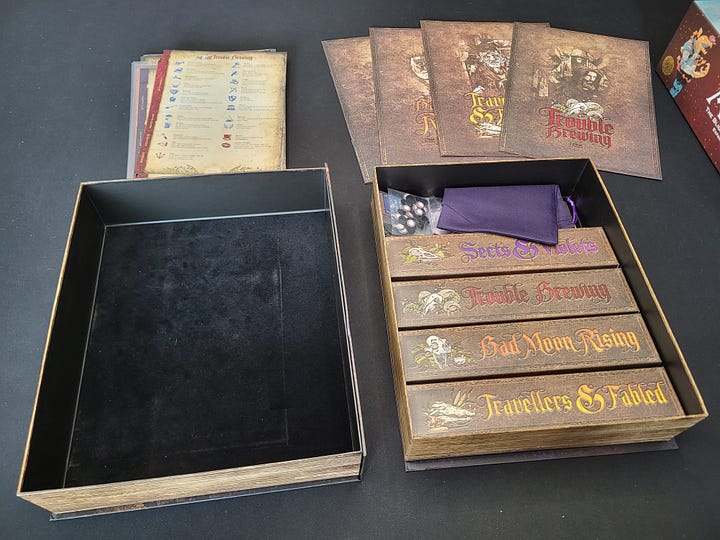
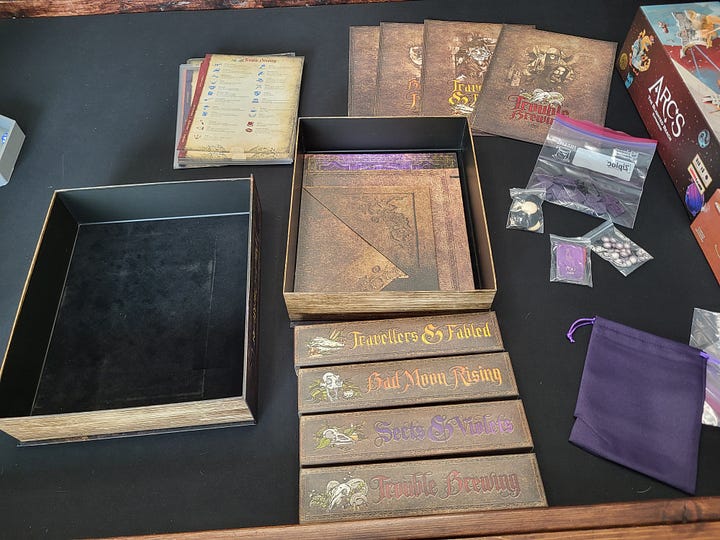
Like other games in this genre, gameplay consists of a day/night cycle. Everyone is given a role that has an action or ability of some kind, the bad guys know who the other bad guys are, the good guys don't know much for a fact. During the day cycle, the demon is lying about their role, disguised as a regular townsfolk and the good guys are trying to sniff out the demon. At the end of the day, one of the players must be sacrificed in an attempt to root out the demon. If the demon is destroyed, the good guys win, if enough innocent townsfolk end up murdered instead, the bad guys win.
But now we get into what makes this game unique and different.
Even after death, you're still in the game
There is little you can find more aggravating than playing a social deduction game as a good guy, with no information to work off of, and then you get sacrificed and are now required to silently watch the rest of the game. It just sucks. Some games get away with this by being quick and snappy, and some games just hold off on actually eliminated anyone until further in. In this game, you're still free to talk and be included in the conversation AND you still have one final vote to kick in at an opportune time during the rest of the game.
Some of the roles even have abilities that only trigger when you're killed. This is a big point to keeping a large group interested in seeing the game through to its conclusion and incentivizes everyone to play in search of the story the unfolds.
Organization
I've run very large groups for roleplaying games and it can get precarious keeping things moving and keeping information straight. I was very curious how a social deduction game claiming a max player count of 21 players would keep the storyteller from becoming overwhelmed. The answer appears to be a mix of tips and tricks from running both TTRPGS and board games.
Each character has some ability ranging from some bit of information to protecting or slaying targets. Each game piece related to that role has some description of what that role's ability is. I've seen iterations of this game type that immediately felt like 'too much' when you're washed over with a pile of special character roles and it can become a barrier for entry to players. This game has set-specific hand outs for each possible player limited to that sets options and the roles are grouped by their type: 'Townsfolk', 'Outsiders', 'Minions', and 'Demons'. The player count will determine the exact mix of these, but the grouping reduces the number of things you immediately need to keep in mind and it is well laid out on these single pages with color coding which I greatly appreciate as someone who will need to teach the game to people that need as few barriers to entry as possible.
Inside the grimoire, reminder tokens specific to each role in play has matching iconography and the physical layout of the tokens inside the box serve to keep track by seating arrangement. This enables simple tracking as the storyteller walks around the room "waking" different players at night to let them perform their abilities. To keep this from being a major time-suck, each game set has a one-sheet that sits in the grimoire and the storyteller moves tokens as they walk a checklist. Simple and effective.
Style
The inside of the game box is felt-lined and intended to be held in one hand by the storyteller as the game is played. It's just a really cool gimmick. I was concerned when I saw it is held together by two simple office supply clips, but it really does seem to work (as long as you hold it from the bottom or the center). I was also concerned with the tokens moving around but the felt-backing does keep everything in place. I could see walking around a room running this game for 20 people and it working out and this thing just feels substantial and important in your hands. Of course, tripping would be disastrous and I am a klutz so in practice this will require some focus.
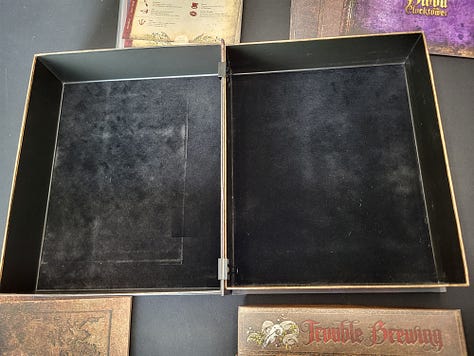
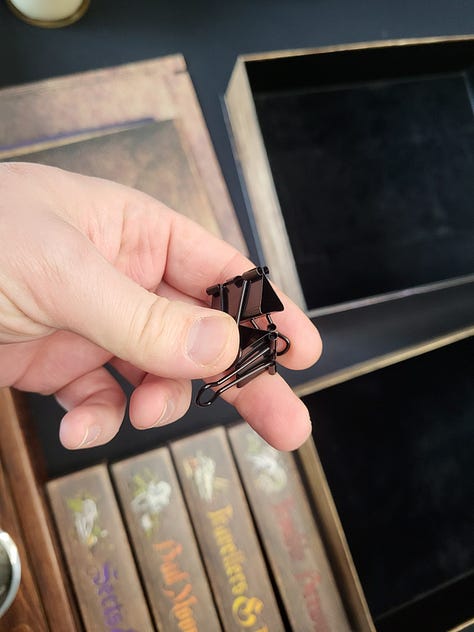

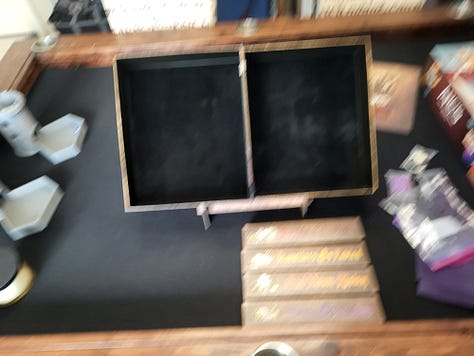
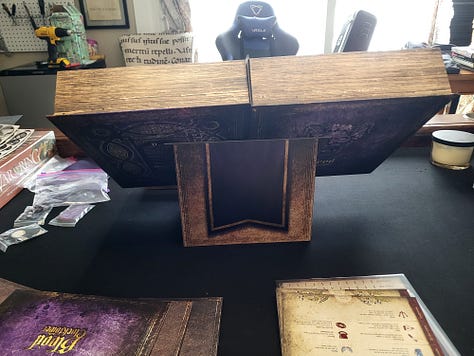
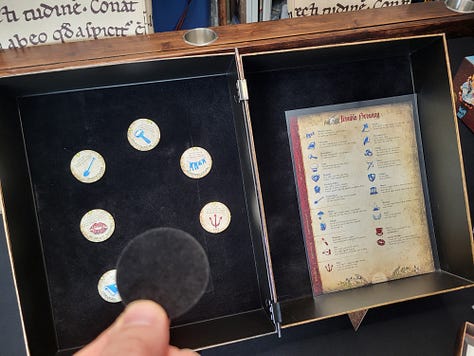
The art is all very thematic and ranges in detail amongst a sketchy style that serves to feel like a journal recording these insidious events in the town or someone studying and reporting on strange happenings. All in all very cool.
Other Comments
Something in the design that really caught my attention is the injection of 'game master fiat'. The rules around the specific roles, the player count, the execution of the game is very firm and doesn't ask the storyteller to fill in the blanks, but the storyteller is given what I would consider well thought out TTRPG game master advice. The skills in being a good 'storyteller' in this game have a lot of overlap with what it takes to be a good game master running a ttrpg. There is room and some grey area around what information is given when it needs to be false information and the storyteller is advised to lean the game towards fairness between the two sides. This may mean a gentle finger on the scale sometimes, but it is expected within the rules, and brings the role of storyteller into the realm of art form in the direction of game master.
As someone who loves running games, this is an exciting aspect for me.
Beyond this, the creators of the game, “Pandemonium Institute” created a web-app that can be used to create custom game lists, that will even spit out hand outs for you. This is a little something extra that I may never use but certainly appreciate. I feel like this is a great way to have a “game-system” game that has endless top end, but doesn’t require you to look into the abyss of game design to experience a complete version of the game.
Lastly, there are four more game sets that you can get with complete pieces designed by the creators. This game seems to reward handsomely for your time commitment.
Conclusion
I have a couple opportunities to hit the max player count for this game coming up this year. I plan to use this game to get the ball rolling with a large group I plan to run a custom Shadowdark one shot for where half the players will be either new to roleplaying games or just don't play them often. We're talking about board gamers who like murder mysteries and the occasional role playing game which I think this game combines all of that to an excellent social conundrum that will get people talking to each other even if they don't know each other before the game starts. Instant community, which to me is an awesome draw.
Getting to still play after your character gets the axe, baking in rules that allow alot of flexibility within a stable and tested game structure, and having a well-organized execution make for a great experience.
I will likely write up a play report after I get some play sessions in with this.
Till next time!
Where To Purchase and Other Sources
Thanks for Reading!
Please like, share, and comment your thoughts!

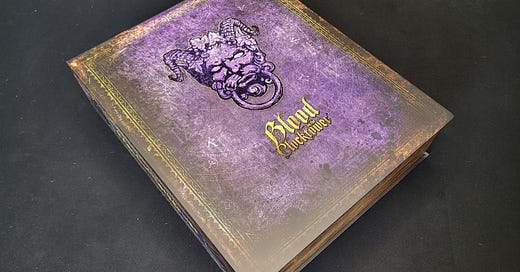



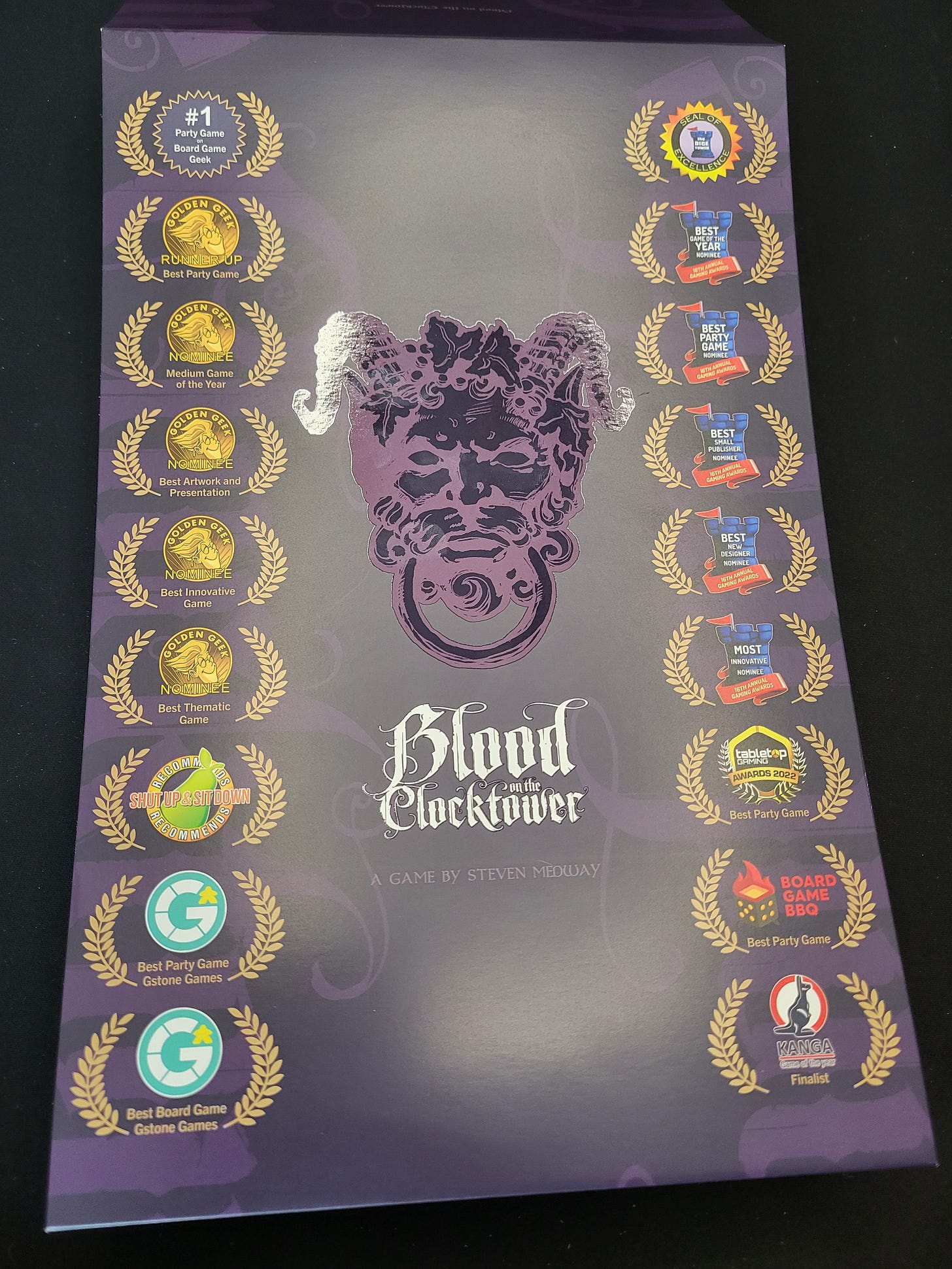



Great write up!